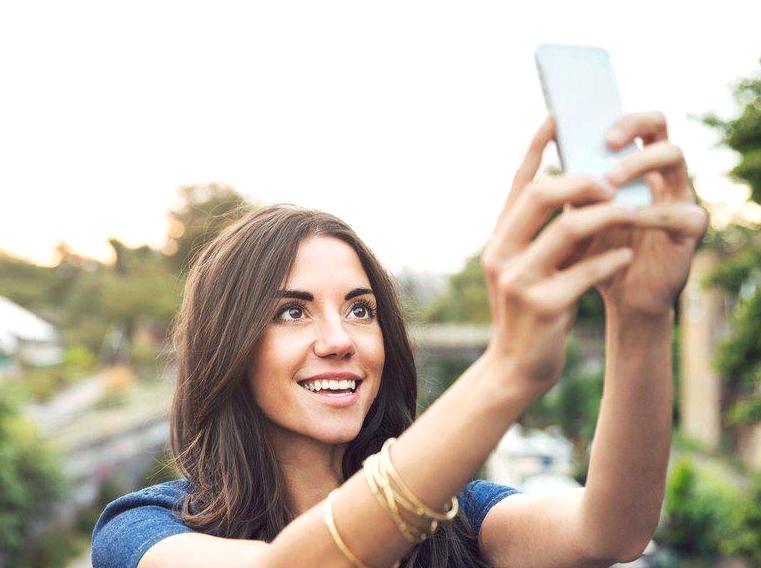How to Take a Good Selfie
Taking a good selfie is more than just pointing and shooting; it involves a mixture of technique, environment, and, most importantly, your confidence. This article will guide you through the essential tips and strategies to ensure you capture the best version of yourself every time you snap a selfie. From lighting, angles, and expressions, each aspect contributes to your selfie game. Let’s delve into the art of self-portraiture and unlock the secrets to taking that perfect photo.

Understanding the Perfect Lighting
Lighting is perhaps the most critical element when it comes to taking a good selfie. Natural light is always your best friend, so try to position yourself near a window or outdoors where you can benefit from soft, diffused sunlight. Avoid harsh or direct light, as it can create unflattering shadows and highlights on your face. If you must take a selfie indoors, consider using additional light sources like a ring light to enhance your features.
Here are some tips for achieving the best lighting:
- Opt for golden hour—shortly after sunrise or before sunset—for the most flattering light.
- Avoid overhead lighting, which can cast shadows on your face.
- Experiment with different lighting angles to find the most flattering baselines for your selfies.

Finding the Right Angle
The angle from which you take a selfie can significantly affect the outcome. Typically, taking a photo from a slightly elevated position can be very flattering as it elongates the neck and gives a defined jawline. Make sure to avoid holding the camera too low, as this can create unflattering perspectives. Instead, try angling the camera just above your eye level for a more appealing shot.
Your head tilt matters too; tilting your head to one side often creates a more dynamic photo. Don’t hesitate to take several shots from different angles—this will allow you to see what works for you. Remember, practice makes perfect, and discovering your best angles can drastically improve your selfie results.

Setting the Scene
The background of your selfie can either enhance or detract from the main subject—yourself! Make sure to select a clean, uncluttered background wherever possible. A busy scene can take the focus away from your face and make the picture less appealing. Consider using complementary environments that can add interest to the photo, such as nature settings or urban landscapes.
Don’t forget about the color palette in your surroundings, which should ideally harmonize with your outfit and skin tone. If you’re in a place where the background isn’t ideal, you can always blur it out by using portrait mode on your phone or photo editing apps after taking the picture. Always be aware of what’s behind you in a selfie; sometimes the sweetest moments can be spoiled by an unexpected intruder in the background.

Mastering Facial Expressions
Your expression can define the mood of your selfie. Whether you’re aiming for a candid smile, a serious look, or a playful pout, be genuine in what you express. A forced smile or awkward pose can result in an unflattering photograph. Instead, try to relax and engage with the camera as if it were an old friend. This can make a world of difference.
If you find it difficult to smile naturally, think of something that makes you genuinely happy, or even try leaning into a joke. It’s often helpful to take a series of shots so that you can review which expression resonates best with you. Authenticity is key in photography, so show your true self and let your personality shine through.
Editing and Enhancing Your Selfie
Post-processing is a crucial final step in ensuring your selfie looks its best. With numerous apps available, like Snapseed, VSCO, or Instagram’s own editing tools, you can adjust brightness, contrast, and saturation to optimize your image. Be careful not to over-edit; maintaining a natural appearance is essential. Sometimes a subtle increase in brightness or a slight crop can bring out the best qualities in your photo.
Consider using filters that enhance your natural features without completely altering your appearance. Remember to save both your original and edited versions in case you want to revert later. With the right editing strategies, even selfies taken in less than ideal conditions can look phenomenal.
Conclusion
Taking a good selfie requires a combination of the right lighting, angle, environment, expression, and a touch of editing magic. By mastering these aspects, you’ll elevate your self-portrait skills and capture images that truly represent your personality and essence. Above all, remember to have fun with it! The more you practice, the more confident you’ll become, and soon, taking selfies will feel second nature.
FAQs
The golden hour, shortly after sunrise or before sunset, is considered the best time for outdoor selfies due to its soft and flattering natural light.
2. How can I look more natural in my selfies?
To appear more natural, focus on relaxing and being genuine. Think of something that makes you smile, and avoid forced poses or smiles.
3. Should I use filters on my selfies?
Using filters is a personal choice. Opt for subtle filters that enhance but do not alter your appearance drastically. Authenticity is key!
4. Can I take a selfie without makeup and still look good?
Absolutely! Natural beauty shines through, especially with good lighting and a relaxed expression. Embrace your unique features!
5. What apps are best for editing selfies?
Popular apps for editing selfies include Snapseed, VSCO, and Instagram’s built-in editing tools for adjustments and filters.
